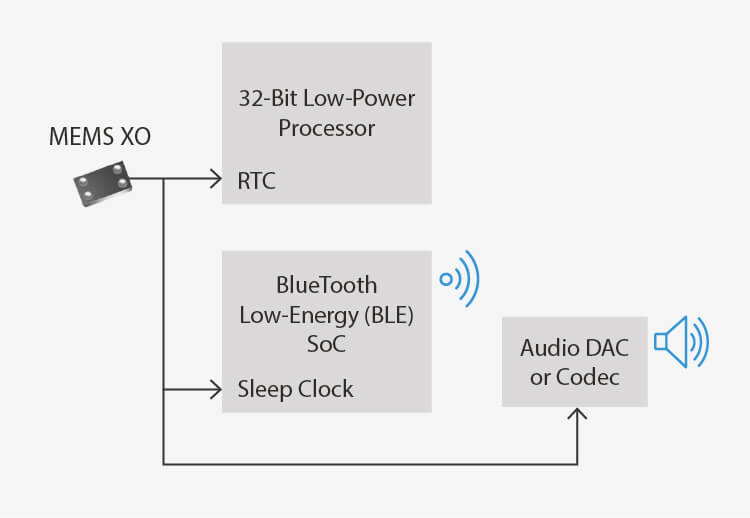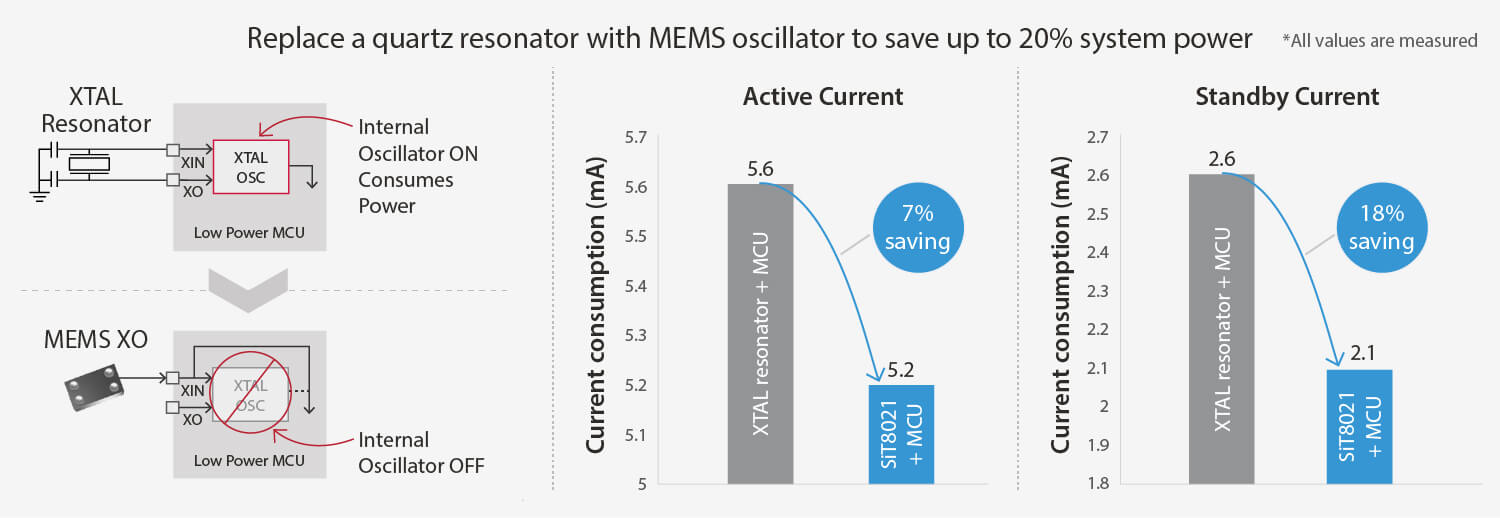To extend battery life, look at the big picture
It might seem counter intuitive that an active device solution consumes less power than a passive device. Every design engineer knows that a passive crystal resonator (XTAL) doesn’t draw power, so why use an oscillator in place of an XTAL in a power sensitive application? The answer becomes clear when total system power is considered.
Battery powered products typically employ one or more timing components. If a XTAL is used, it doesn’t draw current directly from the battery. However, to make the resonator oscillate, it must be driven by an oscillator circuit that resides on a MCU or SoC. And this on-chip oscillator circuit can burn a lot of power.
MEMS-based μPower oscillators provide a lower power alternative to quartz crystal resonators. A highly optimized low-power frequency synthesizer and analog circuitry drives the TempFlat MEMS™ resonator to achieve factory programmable frequencies with microamp-level core currents. In power sensitive applications, a MHz resonator can be replaced with these μPower oscillators and the on-chip oscillator circuit on the MCU/SoC can be turned off. As shown in the diagram below, a SiT8021 μPower oscillator connects directly to the XIN pin and simply bypasses the on-chip XTAL OSC circuit, resulting in a net power saving at the system level.
When a μPower oscillator replaces a crystal XTAL, the combined current consumption of the oscillator + MCU is lowered by 7% during the active state. Whereas in standby mode, 18% savings can be realized. During standby, the oscillator consumes only ≤ 0.9 μA because all internal circuits are turned off with the exception of the MEMS oscillator circuit and the ST pin detection logic.
In addition to consuming less system power, SiTime’s μPower oscillators – measuring only 1.5 x 0.8 mm – consume less board space, an important factor since many power sensitive products are also space sensitive. (See related blog: Shattering the Limits of Power, Size and Weight)
Another advantage of using an oscillator is its capability to drive multiple loads – something XTALs can’t do. When driving more than one load, power consumption increases only fractionally, compounding the power savings benefits of turning off OSC circuits onboard multiple chips (e.g., MCU + audio DAC). In addition to lowering system power, this approach reduces board space, BOM and costs.

When a MEMS-based μPower oscillator replaces a quartz oscillator, the power savings are even more dramatic. In a portable audio application for example, a SiT8021 oscillator operating at 3.072 MHz draws only 60 μA compared to a quartz oscillator at 2.5 mA. In this case, the power consumption is 98% lower. This can effectively extend battery life by a full day – a huge improvement.

SiTime’s revolutionary MEMS and analog technology delivers a solution that lowers total power consumption dramatically. If low power is critical, look at the big picture for big system-level improvements.